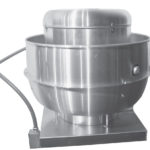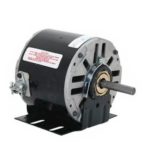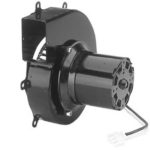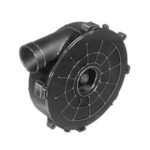Why invest your franchise into mechanical ventilation?
Growing Market Demand:
As awareness of indoor air quality and environmental health increases, there is a growing demand for effective ventilation solutions. This is particularly true in commercial spaces, industrial facilities, and healthcare settings where maintaining a clean and healthy environment is crucial.
Expanding your services to include ventilation services beyond commercial hood cleaning can open up additional revenue streams and contribute to the overall profitability of your business. Here are several ways in which extending into ventilation services can be profitable:
Regulatory Compliance:
Many industries are subject to strict regulations regarding ventilation and air quality. By offering ventilation services, you can help businesses ensure compliance with health and safety standards, building codes, and environmental regulations.
Energy Efficiency:
Providing ventilation services that focus on energy-efficient solutions can appeal to businesses looking to reduce their energy consumption and environmental impact. This can result in long-term cost savings for clients.
Health and Safety:
Proper ventilation is essential for maintaining a healthy and safe indoor environment. Offering services that improve air quality, control contaminants, and reduce the risk of airborne diseases can be a valuable proposition for various industries.
Specialized Expertise:
Ventilation systems can be complex, and businesses may lack the in-house expertise to design, install, and maintain effective systems. Providing specialized knowledge and skills in ventilation services allows you to fill this gap and offer tailored solutions.
Preventive Maintenance Contracts:
Ventilation systems require regular maintenance to ensure optimal performance and longevity. Offering preventive maintenance contracts to clients can create a steady and recurring revenue stream for your business.
Diverse Client Base:
Ventilation services can cater to a diverse range of clients, including restaurants, hospitals, manufacturing plants, offices, and more. This diversity can help your business weather economic fluctuations by serving various industries.
Technological Advancements:
Advances in ventilation technology, including smart ventilation systems and energy recovery systems, provide opportunities for innovative and efficient solutions. Staying updated on these technologies can set your services apart in the market.
Indoor Air Quality Concerns:
Growing awareness of indoor air quality issues, especially in the wake of global events, has heightened the importance of ventilation. Offering services that address concerns related to pollutants, allergens, and pathogens in indoor air can be particularly valuable.
Long-Term Relationships:
Building a reputation for providing reliable and effective ventilation services can lead to long-term relationships with clients. Repeat business and word-of-mouth referrals can contribute to the sustained success of your venture.
Customization and Tailored Solutions:
Every commercial or industrial space has unique ventilation needs. Offering customized solutions based on the specific requirements of clients allows you to provide added value and set your business apart from competitors.
Adaptability to Technological Trends:
- The integration of smart technologies and data analytics in ventilation systems is an emerging trend. By staying adaptable and incorporating these technologies into your services, you can position your business at the forefront of industry advancements.
Onsite Selling Points:
Diversification of Services:
Offering a broader range of ventilation services positions your business as a one-stop-shop for commercial kitchen ventilation needs. This diversification can attract a wider clientele and increase the chances of securing long-term contracts.
Expansion into the ventilation category can increase revenue substantially by products sales AND the additional services/contracts not possible if not expanding into the mechanical/ventilation market sales otherwise.
Full System Solutions:
Provide comprehensive ventilation solutions by offering services related to the entire kitchen exhaust system, including exhaust fans, ductwork, make-up air units, and fire suppression systems. This approach allows you to address the holistic needs of your clients.
Preventive Maintenance Contracts:
Develop preventive maintenance contracts that cover all components of the ventilation system. Regular check-ups and maintenance services can lead to recurring revenue and build long-term relationships with clients.
Energy-Efficient Solutions:
Offer energy-efficient ventilation solutions that not only enhance environmental sustainability but also appeal to businesses seeking cost savings. This may include the installation of energy-efficient exhaust fans or ventilation systems with heat recovery units.
Air Quality Testing and Solutions:
Provide air quality testing services to assess indoor air quality in commercial kitchens. Based on the results, offer solutions such as improved ventilation, filtration systems, or other measures to enhance air quality and meet regulatory standards.
System Design and Consulting:
Expand your services to include system design and consulting. Help clients optimize their ventilation systems for efficiency, compliance, and safety. This expertise can be valuable for new establishments or those undergoing renovations.
Smart Technology Integration:
Stay at the forefront of industry trends by offering smart ventilation solutions. Integrate technologies that allow for remote monitoring, automated adjustments, and energy optimization. Businesses are increasingly interested in modern, tech-driven solutions.
Education and Training Programs:
Develop educational programs and training sessions for kitchen staff on the importance of proper ventilation practices. This not only adds value to your services but also helps clients operate their kitchens more efficiently.
Expand Client Base:
By broadening your services to include ventilation solutions, you can attract clients beyond the restaurant industry. Consider offering services to healthcare facilities, industrial kitchens, educational institutions, and other establishments with unique ventilation needs.
Code Compliance Expertise:
Accordion Content
Stay up-to-date with local building codes and regulations related to ventilation. Offer services that ensure your clients’ ventilation systems are compliant with safety and environmental standards, which can be especially crucial in regulated industries.
Emergency Response Services:
Provide emergency response services for urgent issues such as system failures, fire incidents, or code violations. Offering quick and reliable emergency services can set your business apart and build trust with clients.
Market Positioning:
Market your expanded services effectively by highlighting your expertise in providing comprehensive ventilation solutions. Clearly communicate the benefits of choosing your business for all their ventilation needs.
Compliance & Code Enforement Key Points
Inspections:
The standard outlines the frequency and procedures for inspecting kitchen exhaust systems, including hoods, grease filters, exhaust ducts, and fans.
System Cleaning:
NFPA 96 establishes guidelines for the cleaning of exhaust systems to prevent the accumulation of grease and reduce the risk of fire. It includes detailed requirements for cleaning schedules based on the type of cooking processes and equipment.
Hood Design and Installation:
The standard provides specifications for the design, construction, and installation of commercial kitchen hoods. This includes considerations for capturing and removing effluent, grease, and other by-products of cooking processes.
Ductwork:
NFPA 96 addresses the design and installation of the entire exhaust system, including ductwork. Proper sizing, materials, and access points for cleaning are specified.
Clearance to Combustibles:
NFPA 96 specifies the clearance requirements for combustible materials in relation to kitchen hood systems to reduce the risk of fire spread.
Exhaust Fan Requirements:
Guidelines for the installation and maintenance of exhaust fans in commercial kitchen ventilation systems are provided, including proper sizing and positioning.
Records and Documentation:
The standard requires the maintenance of records related to inspections, cleanings, repairs, and modifications to the kitchen hood system. Keeping accurate documentation is crucial for compliance.







